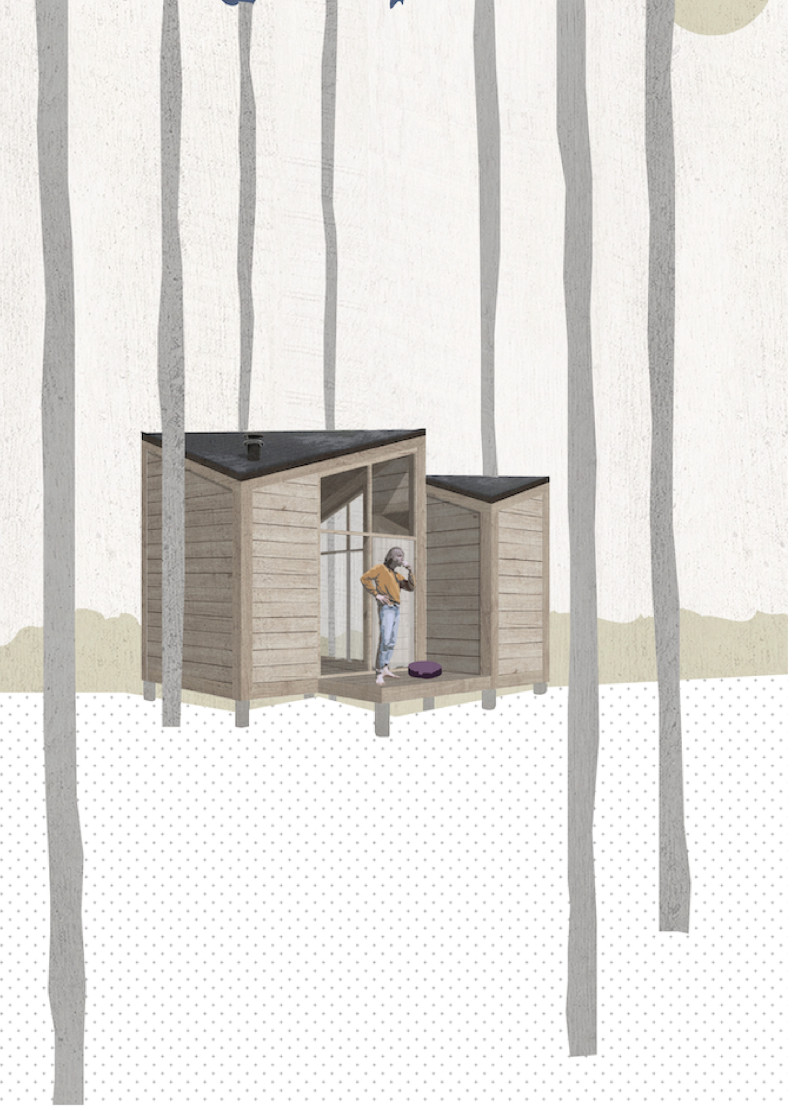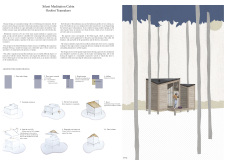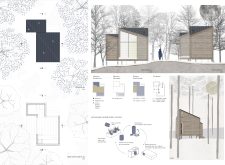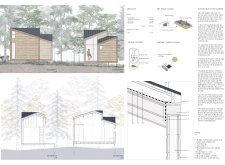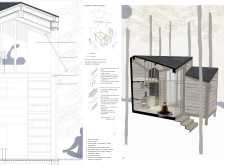5 key facts about this project
The Silent Meditation Cabin, designed by Ozolini Teamakers, is located in a peaceful area that promotes self-reflection and mindfulness. In a world filled with constant stimulation, the cabin offers a space for meditation, helping individuals find clarity and acceptance within themselves. The design aims to integrate the structure with the natural surroundings, creating a retreat that encourages a connection between one’s inner thoughts and the environment outside.
Design Layout
The layout of the cabin centers on a meditation area, serving as the main feature of the building. This space allows for various levels of interaction with nature through façades that include both closed and open sections. Some parts are completely blind, while others open up to an expansive outdoor deck. This arrangement helps blend indoor and outdoor experiences, enhancing the atmosphere for users who seek tranquility.
Spatial Organization
On either side of the meditation area, functional spaces are arranged to support the overall use of the cabin. Rooms for sleeping, eating, and heating connect seamlessly without relying on excessive walls that would disrupt the feeling of space. The bathroom area is thoughtfully positioned away from the central block, offering a separate entrance for easy access. This design choice not only ensures privacy but also keeps the main areas uncluttered.
Roof Structure
The roof of the cabin features steep pitches, commonly found in northern designs, reaching a unique diagonal ridge. This roof style adds character to the building and increases the livable space on the mezzanine level. It introduces interesting shapes and forms, bringing light into the cabin while allowing for physical openness.
Material Expressions
Material choice plays a significant role in the design of the Silent Meditation Cabin. Timber beams provide strong support, while wood paneling creates a warm and inviting interior. Large windows and glass doors let in plenty of light and offer views of the surrounding landscape. This connection to nature is vital for the retreat experience, allowing individuals to feel both protected and part of their environment.
The combination of these design elements contributes to a space that emphasizes meditation and reflection, creating an experience rooted in both simplicity and functionality.


